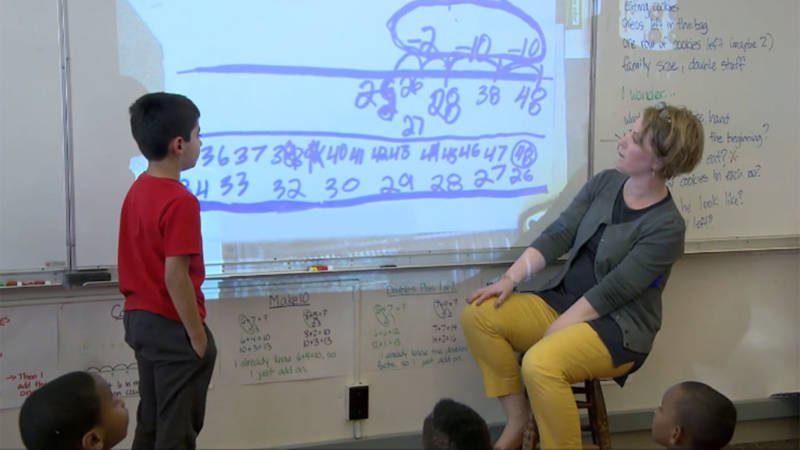Getting students excited and authentically curious about a math task takes more than presenting a word problem. Some teachers are finding that a short, high-interest video or other piece of media that raises questions in kids' minds is the best way to prime them to dive deeply into problem solving.
In this Teaching Channel video of Sarah Dietz' second grade class, she uses a video clip about cookie monster to grab her students' interest and get them questioning. The video presents a puzzle to students and Dietz makes sure to draw out their questions, honing in on the common theme (and the lesson for the day) based on their authentic questions. She's also asking them to decide what information they need to solve their question, an important part of math in the real world that is often left out of traditional textbook problems. Then, she gives them time to work through the question they've posed using a model of the cookie package and their knowledge of various subtraction strategies.
“To [the students], it’s not a math lesson; it’s a puzzle that needs to be solved," said Dietz. "It’s a problem they want to work out.”
When students share their answers at the end, Dietz asks them to use their work to explain their thinking and she leaves enough time for multiple examples of different strategies. Emphasizing that there are many acceptable ways to solve a problem can help students remain open to struggle and figuring things out in the ways that make sense to them.
In another Teaching Channel video about this three-step process called "Three-Act Tasks," kindergarten teacher Kristin Alfonso says: "I love that Three-Act Tasks are usually just difficult enough that even if kids can figure out really quickly on the carpet, they still have to go back to their tables and show us, and be able to prove their thinking to us."


